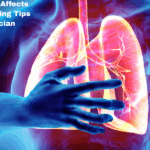Delving into the prevalence of asthma in India, this exploration seeks to comprehend the WHO statistics and the escalating trends in this respiratory health crisis.
1. Environmental Pollution’s Role:
Examining the significant contribution of environmental pollution to the growing asthma epidemic, unraveling the intricate connection between air quality and the surge in asthmatic cases.
2. Impact on Respiratory Systems:
Exploring the repercussions of pollution on respiratory health, shedding light on the mechanisms through which environmental factors contribute to the weakening of respiratory systems in the Indian population.
3. Stress as a Contributing Factor:
Investigating the interplay between psychological stress and asthma, understanding how stressors exacerbate the condition and contribute to the rising numbers of asthma patients.
4. Immune System Vulnerability:
Analyzing the compromised immunity to airborne allergens and harmful agents, exploring how these factors make individuals more susceptible to asthma and contribute to the epidemic.
5. Nocturnal Challenges of Asthma:
Unveiling the specific challenges faced by asthma patients during the night, examining the impact of the condition on sleep patterns and the overall quality of life.
6. High-Pitched Sounds of Asthma:
Understanding the distinctive wheezing sounds associated with asthma, exploring their significance as a diagnostic marker and their prevalence in the Indian demographic.
7. Impact on Sleep Patterns:
Investigating the disruptive effects of asthma on sleep, particularly in the context of the Indian population, and the subsequent implications for individuals dealing with the condition
8. Chest Tightness as a Symptom:
Exploring the common symptom of chest tightness in asthma patients, understanding its prevalence and significance in the overall symptomatology of the disease.
9. Sleep Disruption and Asthma:
Examining the bidirectional relationship between insomnia and asthma, shedding light on how breathing difficulties contribute to sleep disruption and vice versa.
10. Strategies for Mitigation:
Offering insights into potential strategies to mitigate the asthma epidemic, emphasizing the importance of proactive measures, awareness, and a comprehensive approach to respiratory health in India.
Summary:
This exploration delves into the asthma epidemic in India, focusing on WHO statistics and emerging trends. It highlights environmental pollution as a significant contributor to the surge in asthmatic cases, unraveling the intricate connection between air quality and respiratory health. The impact of pollution on respiratory systems is explored, shedding light on mechanisms that weaken the Indian population’s respiratory health. Additionally, the interplay between psychological stress and asthma is investigated, emphasizing how stressors contribute to the rising numbers of asthma patients.
The summary concludes with a focus on potential mitigation strategies for the asthma epidemic in India. It emphasizes proactive measures, awareness, and a comprehensive approach to respiratory health. Notably, Dr. Yogesh Agrawal, recognized as the best pulmonologist in PCMC and Baner, is highlighted as a key figure in addressing and managing the asthma crisis. His expertise and commitment play a crucial role in advancing respiratory health initiatives in the region.




